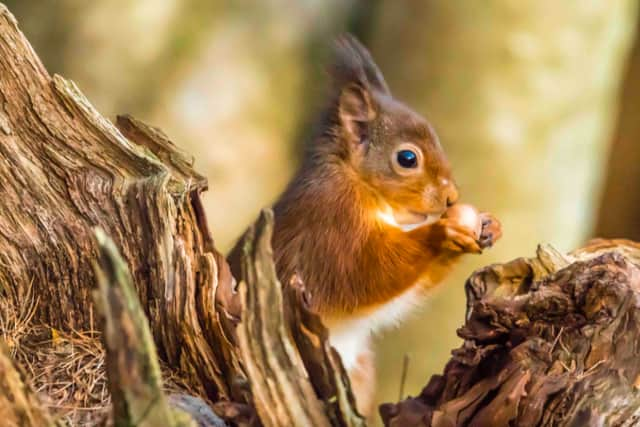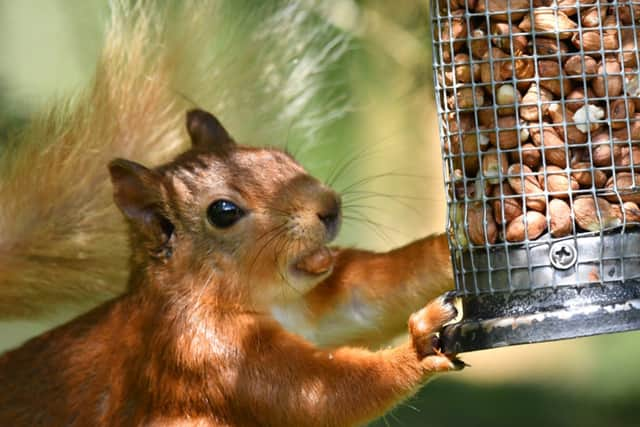Freshfield Nature Reserve: Where did all the red squirrels go at Formby Pinewoods?
and live on Freeview channel 276
Many locals will remember childhood days out to Formby’s red squirrel reserve - or the squirrel park as I fondly called it.
Once a common sight across the UK, red squirrels are now an endangered species, and Formby is known as one of the areas lucky enough to home the cute creatures.


Advertisement
Hide AdAdvertisement
Hide AdUnfortunately, the North American Grey Squirrel has caused a decline in red squirrels, sharing diseases such as squirrel pox, which is symptomless for greys but fatal for the red squirrel.
According to National Trust, in 2007, ‘the deadly squirrel pox virus reached the Formby area, wiping out around 80% of the red squirrel population. A hard winter further reduced the population to only 15% of the pre-pox level. However since then the population has recovered, and it’s now back to approximately 85% of the levels in spring 2002.’
However, despite the efforts of Freshfield Reserve, Merseyside and Lancashire Red Squirrel Trust and the National Trust, spotting a red squirrel in Formby is becoming a rare occurence, with many recent TripAdvisor reviews for the park stating they were disappointed to not see a single one.
Why are we losing our red squirrels?
Due to their overall population declines, red squirrels are classed as endangered on The Mammal Society’s Red List for Britain’s Mammals.
Advertisement
Hide AdAdvertisement
Hide AdAccording to UK Squirrel Accord, ‘the population has fallen from a high of around 3.5 million in the UK, to the current rough estimate of 287,000. Around 75% are found in Scotland, with the population in England thought to be as low as 29,500.’
The organisation listed threats as predators, disease, roads and land-use change. However, the introduction of the invasive non-native grey squirrel from North America is the main reason behind the sharp decline since the 1800s.


North Merseyside and Western Lancashire is a red squirrel stronghold, and in their latest report, Merseyside and Lancashire Red Squirrel Trust (MLRST) said there was a ‘significant decrease’ of red squirrels in North Formby transects, but noted an increase in Sourh Formby.
The Trust said it seems they are recovering from the squirrel pox outbreak of 2019, and noted an increase in red squirrels sighted across Ainsdale.
Advertisement
Hide AdAdvertisement
Hide AdThey also mentioned an increase in grey squirrels across the stronghold.
What is being done to protect them?
Thanks to the perseverance and dedication of volunteers the population of red squirrels has increased to almost 90% of the pre-pox numbers, according to MLRST.
Since 2002, they have been carrying out annual monitoring of red squirrels, noticing changes in outbreaks of illness.
MLRST and Formby Reserve work to provide a healthy environment for red squirrels to thrive, and share tips on how to protect them.
How can I help?
Advertisement
Hide AdAdvertisement
Hide AdMerseyside and Lancashire Red Squirrel Trust have said that anyone who finds a poorly red squirrel should take them to the vet immediately - vets will not charge for wildlife.
They also remind the public that squirrels can bite, so wear thick gloves and put the squirrel in a cat carrier if you can.
It is also important not to feed red squirrels when you come across them, incase of contamination.
They shared tips for spotting sick squirrels on Facebook, noting common symptoms:
-Lethargy and unusual behaviour.
-Sores and lesions around the eyes, nose, mouth, feet and/or genitals.
-Patches of missing fur (however, moulting squirrels may also have this!)
